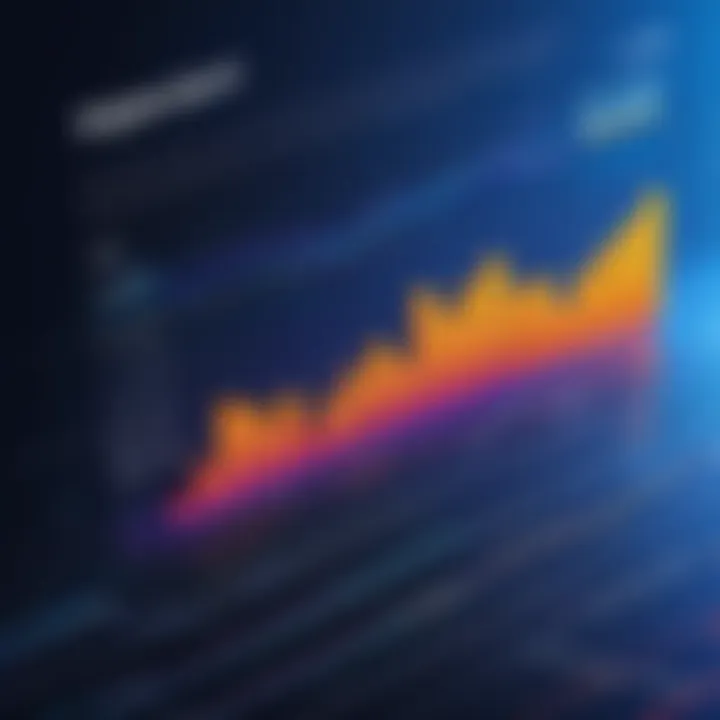Understanding Internet Usage: A Comprehensive Guide


Intro
In an increasingly interconnected world, understanding internet usage is essential. The digital landscape provides numerous advantages but also poses significant challenges. Monitoring how we engage with online platforms can have profound effects on productivity and mental health. This guide aims to dissect the complexities surrounding internet usage, focusing on its importance and implications.
The relevance of tracking internet habits cannot be overstated. As our interaction with technology deepens, it is vital to recognize the correlation between connectivity and well-being. The guide will present insights into various methods and tools for monitoring usage, strategies for enhancing productivity, and ways to safeguard personal data privacy.
Key Features
Implications of Internet Monitoring
Understanding the implications behind internet usage monitoring extends beyond productivity alone. Individuals frequently overlook how excessive online engagement can impact mental health. Research indicates that increased screen time is linked to anxiety and decreased satisfaction. Therefore, recognizing the signs of detrimental usage is crucial.
Tools for Tracking Usage
A variety of tools exists for assessing internet habits. Software like RescueTime and Toggl provides users with comprehensive insights into where time is spent online. This data is not merely informative; it can drive changes in behavior and help individuals prioritize their online activities.
"Effective monitoring can be a game-changer in achieving a balance between productivity and downtime."
Practical Strategies for Management
To manage internet consumption, individuals can establish practical routines. Setting specific times for internet use and implementing breaks can enhance productivity. Moreover, adopting techniques such as the Pomodoro Technique can help in maintaining focus while reducing fatigue from continuous online engagement.
Understanding Internet Consumption Trends
By examining internet usage trends, one can better appreciate the ebb and flow of digital engagement across demographics. Factors such as age, profession, and socioeconomic status influence how individuals interact with technology. This understanding can foster deeper discussions about social impacts and digital literacy.
Data Privacy in the Digital Age
In the realm of internet usage, data privacy remains a pressing concern. Users must navigate the fine line between convenience and security. VPNs, encryption, and awareness of personal data policies can empower users to take control of their digital footprint. Understanding one’s rights in the digital space is essential for maintaining privacy.
Culmination
The importance of understanding internet usage cannot be understated. As we navigate the complexities of our digital lives, monitoring and managing our internet habits becomes critical. This guide aims to equip tech-savvy individuals with the knowledge necessary to thrive in a connected world while safeguarding their mental health.
The Importance of Monitoring Internet Usage
In an era dominated by digital interactions, monitoring internet usage emerges as a crucial practice. This article emphasizes how being informed about online behavior can lead to a healthier and more productive lifestyle. Internet usage monitoring not only sheds light on personal habits but also provides insights into broader trends affecting productivity and mental well-being.
Understanding Internet Consumption
Understanding internet consumption requires a clear awareness of how much time one spends online and for what purposes. This involves breaking down activities into categories such as work, leisure, and socialization. Tools can quantify usage, allowing individuals to gain a data-driven perspective on their habits.
For instance, a typical user might spend hours scrolling through social media which could substitute for productive activities. By tracking time spent on various sites, users can identify patterns and adjust accordingly. Tools like RescueTime or Moment provide users with detailed reports of their internet habits, revealing the nuances of consumption that often go unnoticed.
Implications for Productivity
The implications of internet monitoring on productivity are significant. Studies show that excessive internet use can detract from work-related tasks. It often leads to distractions. This distraction can be detrimental in professional environments where focus is critical. By identifying periods of high usage, individuals can restructure their time more effectively.
Furthermore, monitoring offers the chance to set specific goals. For example, if a user realizes that they spend two hours daily on unproductive browsing, they can establish usage limits. Techniques like the Pomodoro Technique encourage short bursts of focused work followed by brief breaks. This way, users can harness their online habits to enhance productivity rather than hinder it.
Mental Health Considerations
Mental health is another critical area influenced by internet usage. Overconsumption of online content can result in anxiety, depression, or feelings of isolation. Excessive screen time disrupts sleep patterns and can negatively impact mood.
Maintaining balance in internet usage contributes to emotional stability. Monitoring allows individuals to recognize when their online habits veer into unhealthy territory. By setting parameters for internet use and incorporating offline activities, users can strengthen their mental health. Strategies such as mindfulness or digital detoxes can assist in reducing the adverse effects associated with prolonged internet exposure.
"Monitoring your internet usage helps to cultivate a conscious approach to digital engagement that can enhance quality of life."
In summary, understanding and monitoring internet usage is essential for individuals seeking to improve productivity and mental well-being. By recognizing consumption patterns, one can take actionable steps towards a better balance in the digital realm.


Common Tools for Tracking Internet Usage
Monitoring internet usage has become increasingly important for both personal and professional growth. Understanding how much time we spend online and what we do while there can provide valuable insights. This section covers the tools available to help users effectively track their internet habits. With a range of options from software solutions to browser extensions and mobile applications, individuals can choose the method that best fits their lifestyle and preferences.
Software Solutions
Software solutions are comprehensive tools that usually install on a computer or laptop. They monitor web activity, track application usage, and provide detailed reports. Key benefits of these solutions include:
- Detailed Reporting: Many software options come equipped with powerful reporting features. Users can examine their internet activity over different periods, identify peak usage times, and understand what websites consume most of their time.
- Blocking Features: Certain software allows users to set limits on specific sites. This can mitigate distractions, which is particularly useful for professionals aiming to improve productivity.
- User-Friendly Interfaces: Most tools offer intuitive interfaces, making it simple for any user to navigate and understand their internet patterns.
Some popular software solutions include RescueTime, Qustodio, and Net Nanny. Each offers unique features tailored for various user needs, from casual browsing to professional applications.
Browser Extensions
Browser extensions provide a lightweight way to track internet usage directly from your web browser. These tools can be added to browsers like Chrome or Firefox and usually monitor time spent on different websites. Here’s why they are valuable:
- Simplicity: Browser extensions are often easy to install and use. They integrate seamlessly into daily browsing without requiring additional software.
- Real-Time Monitoring: Often, browser extensions provide real-time tracking. Users can instantly see how long they have been on any given site, promoting immediate awareness.
- Customization: Many extensions allow users to customize which sites to track or limit. This flexibility lets individuals focus on specific activities relevant to their goals.
Examples of useful browser extensions include StayFocusd, Forest, and Time Tracker. Each has distinct functionalities to cater to different tracking desires, from minimizing distractions to encouraging productivity.
Mobile Applications
With the rise of mobile technology, applications for tracking internet usage have also gained traction. These applications can help individuals monitor their mobile activity, a significant aspect since many users spend a considerable amount of their day on their devices. Key features of these applications include:
- Cross-Platform Syncing: Many mobile apps sync data across devices. This ensures continuity and lets users monitor their usage patterns regardless of how they access the internet.
- Alerts and Notifications: Certain applications send alerts when usage limits are approached. This feature helps users remain mindful of their internet habits in real-time.
- Analytics Dashboard: Mobile applications often feature easy-to-read dashboards showing the breakdown of internet usage by app or time spent.
Renowned mobile applications include moment, Offtime, and Screen Time. These apps aim to provide users the mindfulness needed to manage their internet consumption effectively.
"Monitoring internet usage is not just about tracking time; it's about gaining insights into habits, fostering productivity, and ensuring mental well-being."
Analyzing Internet Usage Data
Analyzing internet usage data is a pivotal element in understanding how individuals interact with digital content. By assessing this data, users can uncover patterns that reveal their online behavior. This understanding is essential in today’s technology-driven life, where excessive internet use can compromise productivity and mental well-being. Recognizing these trends allows for informed decisions, leading to healthier online habits and improved efficiency.
Interpreting Usage Patterns
Interpreting usage patterns involves examining the frequency, duration, and types of online activities. This can shed light on one's digital habits. For instance, a user may find they spend excessive hours scrolling through social media rather than engaging in educational or productive tasks. Recognizing these trends is the first step towards modification.
To interpret usage patterns:
- Review statistics from tracking tools: These tools provide data on the time spent on various websites and applications.
- Identify high-usage periods: Understanding when distractions are most prevalent can help schedule focused activities at alternative times.
- Aggregate data over weeks or months to see if behaviors are consistent or variable.
The combination of these insights leads to actionable strategies to improve digital engagement.
Identifying Addictive Behaviors
Identifying addictive behaviors in internet use is crucial for maintaining a balanced digital life. Signs of addiction may include neglecting responsibilities, losing track of time, or feelings of anxiety when not connected online. Acknowledging these signs is not just about self-awareness, but also about seeking to restore a healthier balance.
Common indicators of addictive behaviors include:
- Inability to limit usage despite attempts to cut back.
- Physical symptoms of withdrawal like irritability when not using the internet.
- Neglecting offline relationships, opting for virtual interactions instead.
Recognizing these patterns is fundamental for individuals to seek help or to employ better management strategies, thus promoting a healthier internet interaction.
Setting Benchmarks and Goals
Setting benchmarks and goals enhances the ability to control internet usage effectively. Without specified targets, it’s difficult to gauge progress or maintain motivation. Establishing clear objectives acts as a guide to achieving a balanced digital lifestyle.
To set effective benchmarks and goals:


- Define realistic limits for daily internet use. For example, aim for no more than two hours per day on social media.
- Track progress weekly to adjust goals as necessary. Flexibility can lead to better adherence to targets.
- Identify specific areas for improvement, such as reducing time spent watching videos or shopping online.
These goals not only promote mindfulness about internet use but also encourage personal accountability. By analyzing and reflecting on usage data, individuals can lead more purposeful online lives.
Strategies for Effective Management
Effective management of internet usage is crucial in today’s digital landscape. With the power of connectivity at our fingertips, it becomes essential to strike a balance between productive engagement and potential distractions. Understanding how to manage your internet habits can enhance not only personal well-being but also overall productivity. Effective management strategies assist in developing a more conscious approach to online activities. Individuals can pinpoint unhealthy patterns and work towards modifying these behaviors. Below, we will examine three specific strategies that can foster mindful internet usage: establishing usage limits, implementing breaks, and curating online content.
Establishing Usage Limits
Setting clear usage limits is vital in curbing excessive online time. By imposing boundaries on screen time, individuals can allocate time more effectively and prioritize essential activities. This method can be particularly beneficial in professional settings where the line between work and leisure can blur.
One approach to establishing usage limits includes utilizing built-in features available on most devices. Digital well-being tools, found on platforms like Android and iOS, allow for accurate tracking of time spent on applications and can send alerts when specific thresholds are met. Another option is to implement third-party applications like RescueTime, which can provide deeper insights into daily habits.
"The essence of managing one's time lies in knowing where it goes."
Creating realistic goals is also essential. Instead of implementing strict rules, flexibility can enhance adherence. Gradually reducing time spent online can yield better long-term results compared to sudden, drastic changes. Importantly, these limits can be personalized to fit individual preferences and needs.
Implementing Breaks and Downtime
One effective method to enhance focus and productivity is to incorporate regular breaks into internet usage. Continuous engagement with digital activities can lead to burnout. Scheduled pauses can help re-energize the mind and improve concentration when returning to tasks. Techniques like the Pomodoro Technique advocate focused work sessions followed by short breaks. This alternating pattern cultivates not only efficiency but also refreshes cognitive functions.
Additionally, making these breaks physical can have positive consequences. Standing up, stretching, or engaging in another activity away from screens resets the brain's focus. It becomes essential to remember that the quality of online engagement is often more significant than the quantity.
Curating Online Content
The quality of content consumed is just as important as how much time is spent online. Curation involves selecting and following content that genuinely contributes to personal and professional growth. This can range from unfollowing accounts that do not provide value to subscribing to industry-specific newsletters that enhance one’s skills.
Moreover, implementing tools such as Feedly or Pocket can streamline this process. They allow users to aggregate content from various sources into one place, making it easy to consume and manage.
Curating online interactions also involves being mindful about engagement. Online forums, social media platforms, and discussions can divert attention easily. By focusing on meaningful engagements, individuals can foster enriching online experiences that align with their objectives.
The Role of Data Privacy
Data privacy plays a significant role in understanding internet usage. In an era dominated by digital interactions, the data generated by users is both a valuable resource and a potential vulnerability. The narrative around data privacy has evolved as the internet has matured. Today, users are more aware of how their online activities can be tracked and utilized by various entities. This section seeks to clarify the nuances of data privacy in relation to internet usage, its implications on users, and the responsibilities of companies handling personal data.
Understanding Data Tracking
Data tracking refers to the methods through which organizations collect data related to user behavior. This can involve tracking websites visited, time spent online, and interactions with applications. On one hand, tracking provides businesses with insights that can help improve user experience. It allows for the personalization of services, enhancing relevance for users.
However, concerns arise when users are not made aware of how their data is used. The lack of transparency can lead to distrust. Many users may feel uncomfortable knowing that their habits are monitored without their consent. Data tracking must be understood as a double-edged sword. Proper awareness can empower users to take control of their online presence, making informed decisions about their privacy settings.
Securing Personal Information
Securing personal information is crucial in today's digital world. Users must be proactive in safeguarding their data from potential breaches. Employing strong passwords is the first step towards better security. It is recommended that users utilize a combination of uppercase and lowercase letters, numbers, and symbols when creating passwords. Additionally, enabling two-factor authentication on accounts can greatly enhance security.
Furthermore, being cautious about sharing personal information online is key. Users should think critically about what details they disclose on social media platforms and other websites. Regularly reviewing privacy settings across devices and applications is also recommended. Organizations, on the other hand, bear the responsibility of safeguarding user data. They must implement robust security measures to protect personal information from unauthorized access.
Legislation Impacting Internet Use
The legal landscape surrounding internet usage is continually evolving. Various countries have introduced regulations aimed at protecting user data. The General Data Protection Regulation (GDPR) in the European Union stands as a prominent example. This regulation sets stringent guidelines on how personal data should be collected, stored, and processed.
Furthermore, other laws like the California Consumer Privacy Act (CCPA) are designed to give users more control over their personal information. Users should be familiar with these regulations to understand their rights regarding data privacy. Companies must adapt to these laws, ensuring they comply to avoid hefty fines. Legislation serves as a critical mechanism for protecting users, but users should not solely rely on it. Being informed and vigilant is equally necessary to navigate the complex landscape of online privacy.
The Future of Internet Usage Tracking
The ability to effectively monitor and understand internet usage is evolving. Knowing where the future is headed can provide valuable insights for both individuals and organizations. Developing technologies and shifting user expectations are crucial elements that will shape the landscape of internet usage tracking. Importantly, there is a pressing need to find equilibrium between connectivity and privacy in the unfolding digital ecosystem.
Emerging Technologies


New advancements in technology are emerging rapidly. Artificial intelligence and machine learning are at the forefront, allowing for deeper analysis of internet usage patterns. These technologies can personalize user experiences by offering tailored content based on the analysis of their habits. Additionally, the rise of blockchain technology is changing the way individuals can manage their data privacy. It allows users to track who accesses their information and under what conditions.
Cloud computing plays a significant role as well. It enables greater accessibility to tracking tools across devices. As the Internet of Things (IoT) grows, more devices will contribute to data collection, creating extensive profiles of user behavior. The integration of biometric technology can also enhance the security of personal data. These advancements present several opportunities but also raise critical considerations around data ethics and user consent.
Changing User Expectations
As technology advances, so do user expectations. Contemporary internet users demand transparency from service providers regarding data usage. They want to understand not only how their information is tracked but also how it shapes their online experiences. The growing awareness of data privacy issues is pushing companies to adopt more ethical and user-centric approaches.
Furthermore, users are beginning to favor platforms that offer customization and control over their data. This change signifies a shift in power dynamics; users are no longer passive recipients of information but active participants in the digital marketplace. Eventually, internet usage tracking tools will need to adapt swiftly to meet these new demands.
Balancing Connectivity and Privacy
Striking a balance between connectivity and privacy is essential. The internet facilitates a connected experience, but this connectivity can come at the cost of personal information. As more users become aware of the risks linked to data breaches and misuse, there will be increasing pressure on organizations to prioritize data protection.
This leads to a paradox where users wish to stay connected while simultaneously protecting their privacy. Here are a few considerations for achieving this balance:
- Adopting ethical tracking practices: Organizations should implement transparent policies that clearly explain data usage.
- Offering user control: Providing users with options to customize their data sharing preferences can enhance trust.
- Investing in robust security measures: Ensuring comprehensive security to prevent data breaches protects both users and organizations.
In summary, the future of internet usage tracking is determined by technological advancements, user expectations, and the need for privacy. Finding a balance will be challenging but necessary in navigating the complexities of our increasingly digital world.
Case Studies and Real-World Applications
The concept of monitoring internet usage gains considerable strength through real-world examples. These case studies elucidate how various organizations and individuals approach the challenge of internet consumption. They provide tangible insights and serve as a roadmap for achieving success in efficient time management. Learning from these real-world applications offers a deeper understanding that extends well beyond theoretical discussions.
Successful Implementations in Organizations
Many organizations have adopted various strategies to manage internet usage effectively. For example, companies like Google and Microsoft implement structured internet policies. These policies guide employees on acceptable online behavior, thereby enhancing productivity.
Organizations often employ tracking software like RescueTime or Time Doctor. Such tools enable businesses to analyze usage patterns among their employees, identifying areas of unproductive engagement. By setting clear expectations and providing training, companies cultivate a work environment focused on productive internet use. A significant benefit is the potential for increased employee productivity, which has been backed by various studies showing reduced online distractions lead to higher output.
Individual Success Stories
Individuals also find success in managing their internet usage. One notable case involves a college student who struggled with excessive scrolling on social media platforms. After realizing how much time was wasted, the student implemented a systematic approach. They used applications like StayFocused to limit social media access, allowing only specific windows of time each day.
As a result, they managed to improve their academic performance. Such personal stories highlight the practical implications of monitoring internet habits. They showcase how simple tools can lead to notable life changes.
Lessons Learned from Overuse
The impact of internet overuse is a critical area of examination. A study involving a small business owner revealed that excessive online engagement not only hampered productivity but also strained personal relationships. The business owner found themselves constantly distracted, leading to missed deadlines and increased stress.
This experience served as a wake-up call, prompting a reevaluation of online habits. Employing strict usage limits while designating specific times for essential online communication helped restore balance. This case highlights the risks associated with excessive internet use and underscores the need for adaptive strategies.
"Lessons from both individuals and organizations reveal that structured approaches to internet monitoring can significantly enhance focus and productivity."
In summary, the examination of case studies provides practical insights into the discipline of internet usage. Successful implementations serve as examples of what can be achieved, while lessons learned offer cautionary tales that encourage mindful internet behavior.
Epilogue: Navigating Internet Usage
Understanding how to effectively navigate internet usage is essential in today’s hyper-connected world. As we become increasingly reliant on the internet for both personal and professional activities, the ability to monitor, analyze, and manage our online habits has never been more important. This conclusion synthesizes the insights presented in this article, reinforcing why intentional digital engagement is critical.
Recap of Key Points
The exploration of internet usage reveals several core elements that are pivotal for informed participation in the digital landscape:
- Monitoring Internet Consumption: Keeping track of time spent online helps in recognizing patterns and habits.
- Implications for Productivity: Adjusting internet usage can significantly improve productivity levels, allowing for focused work sessions and reduced distractions.
- Mental Health Considerations: There is a growing awareness of the connection between excessive internet use and mental health issues, emphasizing the need for balance.
- Tools for Tracking Usage: There are various software solutions, browser extensions, and mobile applications available that facilitate effective tracking and management of internet consumption.
- Data Privacy Concerns: As we navigate our online presence, it is crucial to understand how data is tracked and the implications for personal security.
- Future Trends: Emerging technologies will shape internet usage patterns and user expectations, necessitating adaptive strategies to maintain both connectivity and privacy.
Future Recommendations
For individuals and organizations striving to achieve a healthy approach to internet usage, consider the following recommendations:
- Establish Clear Boundaries: Set clear time limits on internet use to promote more mindful engagement with online content.
- Utilize Tracking Tools: Explore the various software and applications that can aid in monitoring and managing usage. Specific tools like RescueTime or StayFocusd can be quite helpful.
- Take Regular Breaks: Incorporate regular breaks into your online activities to avoid burnout and promote mental wellness.
- Stay Informed: Keep abreast of emerging technologies and changes in data privacy legislation to make informed decisions about internet usage habits.
- Engage in Self-Reflection: Regularly assess your internet usage patterns and their impact on productivity and well-being. Adjust behaviors as needed to strike a better balance.
"Balancing connectivity with personal well-being is not just a luxury but a necessity in the digital age."
Navigating internet usage is not merely about limiting time spent online. It involves understanding the implications of how one interacts with digital tools and the environment. By applying the insights gleaned from this article, readers can transform their online habits into more intentional actions, leading to a healthier, more productive, and fulfilling digital experience.



